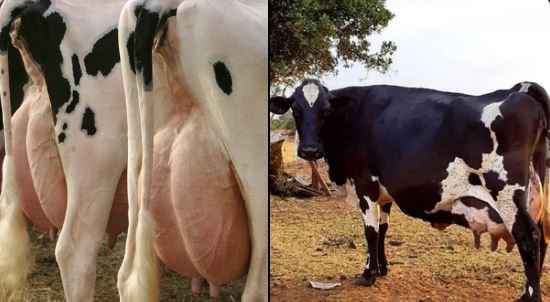Dairy farming pays. This is a testimony from Wanja Eric, an accounting professional who quit his work as a dairy farm manager to start his own farm in Embu.
”I worked as an accountant for several years. With my interest in farming, I met myself as a manager of a company that deals with dairy farming, and that’s where I got the knowledge of farming,’’ he says.
He notes that dairy farming is not as expensive as it seems for anyone willing to start small adding that a budget of Sh60,000 is enough to construct a shed big enough for 3-4 cows.
Unlike many farmers who feed their cows thrice a day, Eric says he feeds his two cows once a day, in the morning immediately after milking.
”Dairy farming is all about research and getting the right information. You will realize the more you feed the cows the more the expenses and sometimes the expenses may not match the profit you get. Feeding is all about feeding smart, feeding the right fodder, timely and well prepared,’’ he adds.
Joseph Othieno: The good and the bad sides of dairy goat farming
The farmer feeds his cows on silage. He explains that the advantage of silage is the surety that the cows would feed on time, as well as guaranteed quality.
His two Holstein Friesian cows produce an average of 40 litres per day with the highest yielder producing 24 litres daily. He emphasizes that the key to high milk production in dairy farming is quality feeding.
Alex Gathii, a Dairy Production, Processing, and Marketing consultant says a cow has proper nutrition when it is fed with proteins, energy, minerals, vitamins, fibre, and water.
These nutrients can be obtained from forages such as maize stalk, sorghum, Napier grass, and silage, as well as concentrates like grains and seeds.
He adds that good forages for dairy cows include grasses such as Kikuyu and Napier, Boma Rhodes, lucerne hay, Brachalia, sweet potato vines, desmodium, sorghum, and maize, among others.
“In total, a lactating cow should consume dry matter equivalent to at least 3 percent of its body weight. For instance, if the cow weighs 600kg then its total feed should amount to at least 18kg of dry matter per day.” Says Gathii.











